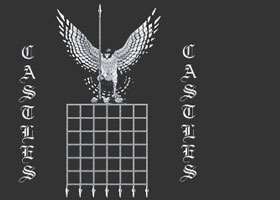Description of the Curtain Wall
The Curtain was an outer wall which surrounded the bailey ( Motte and Bailey castles ) or Medieval castle buildings. The purpose of the curtain wall was to protect the interior of the castle. The wall was often connected by flanking towers which could house castle defenders. Sometimes arrow slits were a feature of the curtain wall enabling castle defenders to safely shoot at any attackers. Built for defence the curtain wall varied in size from 6 - 20 feet thick, up to 45 feet high and up to 1,500 feet long! History of the Curtain Wall
The curtain wall was one of the most important forms of defence and, as such, its history dates back to the Hillforts of the Iron and Bronze Ages. | 
